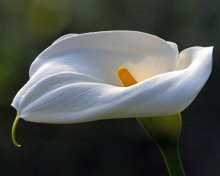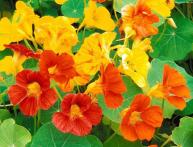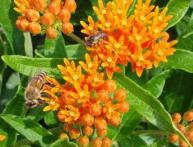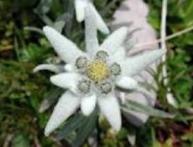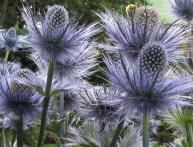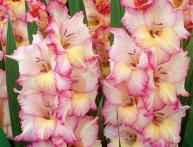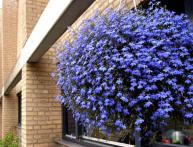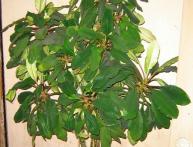Ethiopian calla: a unique beautiful flowering plant
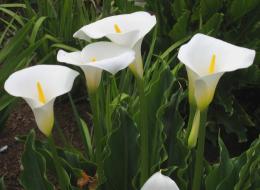
Ethiopian calla also goes by the following names: calla lily, arum. Kala Ethiopian belongs to the genus Aroidaceae or Aronicaceae. The flower was brought to Russia from the swampy areas of South America, where the plant grows in nature without human intervention.
Content:
Description of the plant
Ethiopian calla belongs to the family of evergreen perennial plants with a developed tuberous root system. The leaf of the plant has a glossy green surface, and in some varieties it is decorated with whitish translucent spots. The leaf length can reach up to 50 cm and the width up to 20 cm; the leaf plate is located on a thick petiole, the length of which is approximately equal to the length of the leaf itself.
The color of the bedspread has white, yellow, pink, cream colors, but breeders do not stop there, producing creations with an absolutely unique coloring of the bedspread. All varieties have one feature: after pollination, not a trace remains of the native color of the bedspread, and the color, regardless of the original one, becomes green.
The bud consists of a blanket rolled into a tube, which is then folded back. The formed flower has a short tubular tear at the base, which smoothly expands upward and at the apex takes the form of a shell with a pointed edge. The inflorescences are located on long peduncles and are located above a small rosette of basal leaves.On a fine sunny day, calla lilies have a faint pineapple scent.
The plant reaches a height of 80 cm; at the end of flowering, the above-ground part dies off partially or completely. Fresh young shoots appear to replace dead leaves.
Plant care
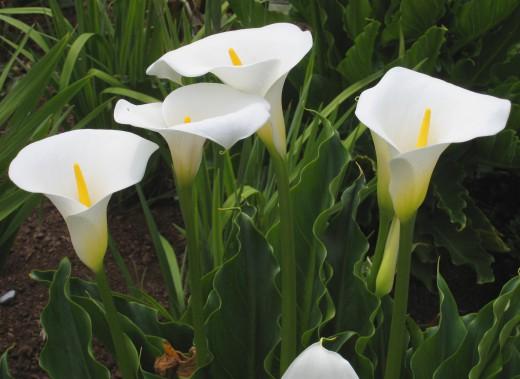
The plant has two life periods: flowering period and a period of rest. This is due to the conditions of the plant’s natural habitat. Since in the natural habitat there is a dry season from May to July, and this naturally leads to the drying out of the swamps, you should not forget about this in home growing conditions.
During the flowering period, the plant requires regular watering with regular fertilization. Fertilizers applied during the flowering period should contain half the normal amount of nitrogen components.
After flowering, watering the plant is sharply reduced and subsequently stopped altogether. A dormant period begins, at which time the pot with the favorite plant is removed to a dry, dark place and left until new shoots appear. During the dormant period, the plant requires less attention.
After dormancy, the plant is replanted, removing all dead leaves and emerging fresh shoots. The tuber is planted to a depth of 7-10 cm; if planted shallower, the leaves will not be able to stay upright and will lie unsightly. The soil is slightly moistened and moderate watering is carried out until the first leaves appear. Young leaves appear 2-3 weeks after transplantation, and this time is the beginning of abundant watering and feeding of the plant.
By regulating temperature and oxygen conditions, you can maintain the plant in a constantly blooming state, without forgetting about vital peace.Abundant flowering is maintained for up to 4 years, after which the tuber requires a new transplant.
Main conditions for proper care are:
- ambient temperature 15-17 degrees
- water deeply during growth and flowering progression
- regular soil fertilization
- observing a rest period
- regular ventilation of the room
Proper and careful care of Ethiopian calla lilies makes it possible to enjoy the unique beauty and sophistication of the plant for many years.
Plant propagation
A must for plant propagation is its transplant. If the plant is not periodically replanted, it becomes overgrown with a large number of small shoots and ceases to please the eye with its beautiful and abundant flowering. It is more expedient to carry out stepsoning by carefully separating the stepsons by hand without the help of a knife. The separated shoots are dried for 2-3 days in a layer of charcoal and then planted in the prepared substrate.
Calla lilies can also be propagated using freshly collected seeds. Seed propagation is used mainly for breeding purposes, since the seeds are very capricious and do not have a high germination rate. Before planting in the substrate, the seeds must be soaked for five to six hours in a solution of potassium humate; it is a natural plant biostimulator.
After soaking, the seeds are laid out on a tray with a damp cloth previously spread in it, and the seeds are covered with another damp cloth on top. The tray with the seeds is placed in a warm place for 6-8 days, during which time care is taken to ensure that the napkin is constantly damp.
The sprouted seeds are sown in trays with soil and left in a warm place until seedlings appear on the surface. Germinated seeds can be planted in open ground. Seeds planted immediately in open ground, unfortunately, mostly die.
When signs of further growth appear, it is necessary to separate and discard the weak ones, leaving only strong and promising sprouts. Initially healthy and strong sprouts will cause less trouble in subsequent care.
Special requirements for soil and fertilizers
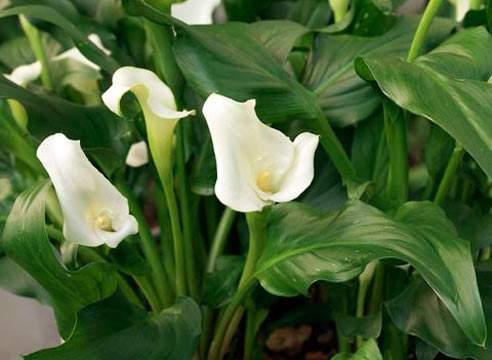
Ethiopian kala is an unpretentious plant to the soil. Main requirements: the soil must be enriched with nutrients; well moisturized without retaining moisture on the surface; and be well enriched with oxygen. The commercially available universal potting soil for growing indoor plants is suitable for this plant.
To prepare the soil yourself, you can take equal amounts of: turf, leaf, peat, humus soil and sand. Such a substrate will meet all the necessary requirements for the growth of beautiful calla lilies.
During flowering The plant and active growth of zantedechia are fed once every 2 weeks with a solution containing the necessary fertilizers. When choosing fertilizers, you should pay attention to their composition: the nitrogen content should be minimal, since nitrogen promotes the powerful development of foliage, while complicating the formation of flower stalks; but on the contrary, there should be a maximum amount of phosphorus, since phosphorus promotes the formation of flowers and the long-term flowering of the plant.
When applying fertilizers, do not forget that their excess will affect the general appearance of the plant; this will be expressed by yellowing leaves and shriveling at the edges.It is worth noting that with a sufficient amount of sunlight, it will need much less fertilizer, but with a lack of light, more fertilizer will need to be applied. A properly selected regime of feeding the plant will allow it to bloom for a long period of time.
Because of their abundant flowering, calla lilies are a favorite decoration for the home and garden for many lovers of flowering plants. And the abundance of varieties allows you to please the eye with a variety of colors.
Educational video about growing calla lilies:
Interesting information about the vegetable garden


